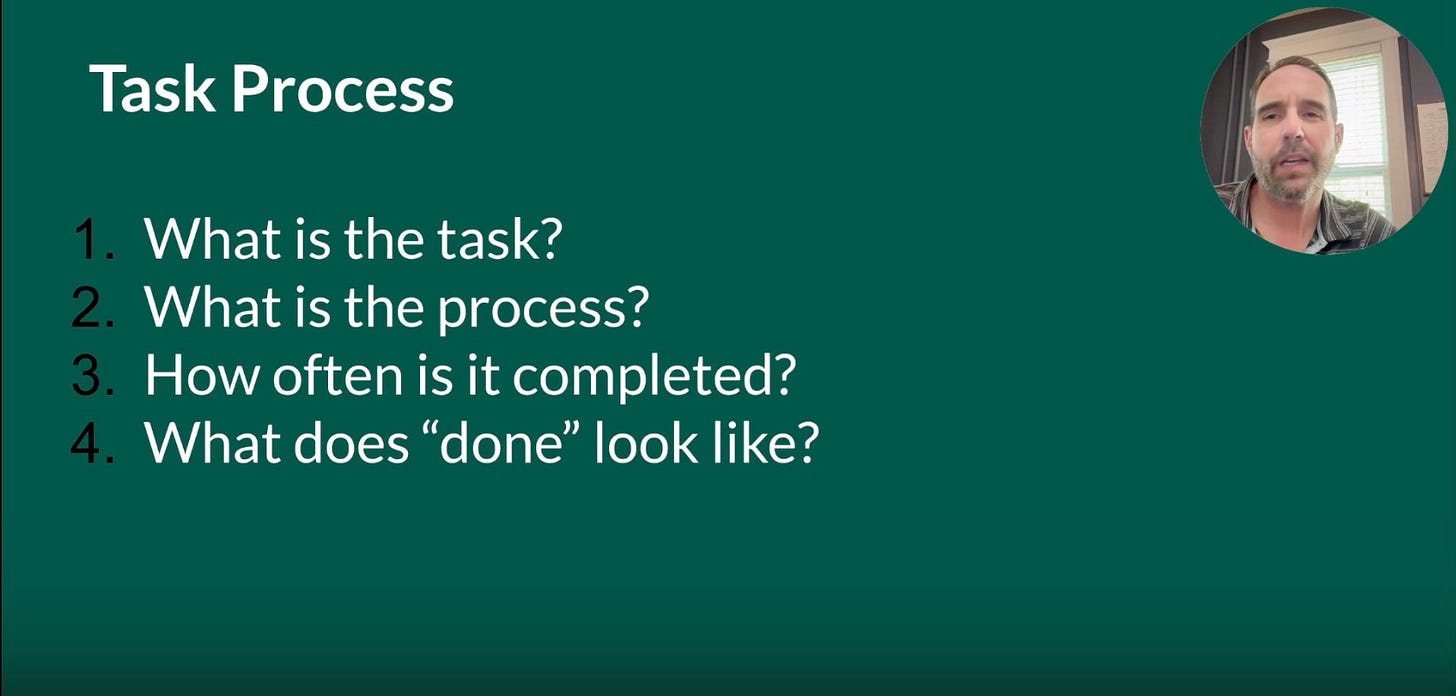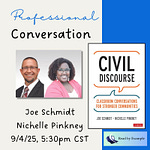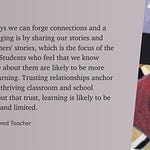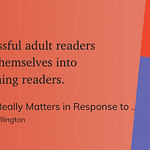One of the biggest challenges I hear that prevents school leaders from getting into classrooms is student behaviors.
I certainly don’t want to blame students for preventing principals from engaging in their instructional leadership work. The reasons kids demonstrate negative behaviors is complex and deserves our close study.
Yet they can also disrupt our days like no other event can. And our responses to these situations do not improve schoolwide teaching and learning for the long term.
In this seven minute video, I share a simple process any leader can use to empower staff to manage the “revolving door” a bit better. It won’t necessarily reduce negative student behaviors. But it does give leaders a better chance of staying in classrooms during instructional walks and/or finishing part of a project requiring deep focus.
Note: This video is an excerpt from my course: The Instructional Leadership Operating System. It is based on a playbook I published that serves as a companion to my book Leading Like a C.O.A.C.H. Subscribers can get early access to the course below at a reduced rate, include a template for writing your own task process.
Full video transcript:
0:01 This is Action #3 in the Instructional Leadership Operating System. It's on empowering others to manage and lead, and I include a picture here from my last school. My assistant Jane was a great example of someone who I worked closely with to empower and put in a position where she could take care of some of the activities and responsibilities that I normally would have taken on, which prevented me from being in classrooms and being the instructional leader that I wanted to be.
0:36 I wanted to also note that there's nothing wrong with getting in hallways, lunchrooms, and recess. Those are important tasks that we should be engaged in from a visibility standpoint and presence. All of those things are important. However, if that's taking up a large portion of our day, that's also taking away from our roles as instructional leaders. We're not able to view instruction, teaching, and learning from a lens that is going to inform our feedback with teachers and inform our professional learning at a school-wide level.
1:09 So, why do we supervise? Of course, security, safety, positive presence, but you don't have to be there for every bell. You can empower others to manage some of these tasks. One activity that I like to engage in and still use is called a task process. It's four steps, and this comes from an organization called iWorker. I used to have a virtual assistant for a short amount of time who helped me improve my website. They taught me how to do a task process. It's four steps, and you can do this on a Google Doc, write it out, work on it together with your virtual assistant or whoever you're going to empower with this task that you want to delegate to someone else so that you can get in the classrooms more.
2:15 The four questions are: What is the task? What is the process? How often is it completed? And what does done look like? The source is iWorker. Here’s an example of how you might use it: A student is sent to the office for behaviors. Normally, in your typical office, the student comes down and goes right to the principal's office. The principal helps solve the problem. The problem with that is if you're not there, you're going to get called back. If you're in your office and free, that's fine. But let's say you're involved in a project that requires your help. Now you have to suspend that project and work with the student, whose agenda are we following here? Yours or the more urgent work that in the long run isn't going to make a big impact on teaching and learning overall.
3:28 Here’s an example of a task process for when a student is sent to the office for behavior. This is something I worked out with my assistant. When a student is sent to the office for behaviors, they will be asked to sit in the office lobby and complete a written reflection. This task replaces sending them into my office immediately. So even if I'm there, my assistant would not just have them go through the office and into my office. The process was when they came in, they would be asked to find a seat in the lobby. They would be handed a think sheet and a writing utensil (pen or pencil). My assistant would read aloud the directions and the questions to the students, answering any questions they might have. These were simple questions like "What happened? Who was involved?" This gets them to reflect on what happened and document their side of the story. When they're done, they're told to sit patiently until the principal is ready to see them, whether I'm in the office or not.
4:42 How often is this completed? Anytime a kid comes down to the office for behavior reasons unless it's a situation that requires immediate attention from the principal. My assistant and I had to clarify that. If someone is bleeding, if there was a fight—these weren't common occurrences—then in those situations, you would bypass the think sheet, have them come into my office if I'm there, or call me down through my walkie-talkie, and I would come down and deal with it at the moment.
5:19 What does done look like? This is important because we’re not sure what to do when these sheets are handed out or when the process doesn't have a final endpoint. In this case, the student completes the think sheet, you collect it, and then notify the teacher that the student is waiting in the office to be seen, but it may be a little while since the principal is not back yet. Most principals would find this beneficial as it gets you into classrooms.
5:57 This is an example of how you can start tracking your walks now that you're in the classroom. At this point, you're wanting to engage in instructional walks. I would keep a sheet like this with the classroom teacher. We had mentioned before having the teacher through the emails let you know about their goals. You might want to meet with each of them first, but if you don’t right away, that’s okay. You can have a casual conversation when you meet with them and just break down a key takeaway from each classroom. What resonated with you? Keep it positive. For example, in the case of Sarah, her goal is to build a positive learning community, so time devoted to teaching classroom routines was something I noticed and wanted to include in my notes. These notes are just for me. I'll eventually show you how to analyze these notes to find some trends and patterns school-wide regarding instruction, but this is the time.
6:53 Now you’ve got your instructional walk resources organized, you've got that scheduled on your calendar, and you've communicated with teachers. Now we’re actually going to get into classrooms again. We’re not giving feedback, not even really praising anything. We’re just being a positive presence and getting in the habit of practice. Just noticing and naming excellence for yourself to have a low-stakes approach to this. This leads into the next part, which is knowing your core beliefs and values, and this will segue into thinking about our instructional leadership team and the instructional framework to guide our conversations.










